john in la
Well-known Member
This is how they install building foundations in southern Louisiana.
All of this area use to be water and over thousands of years it was filled in by Mississippi river silt.
So it is not the best building site. In fact if you dig just a few feet and leave the hole overnight it will be full of water when you return in the morning.
They start by hauling in river sand we pump out of the Mississippi to build the land up to the desired elevation. So yes that is Iowa or some other states dirt.
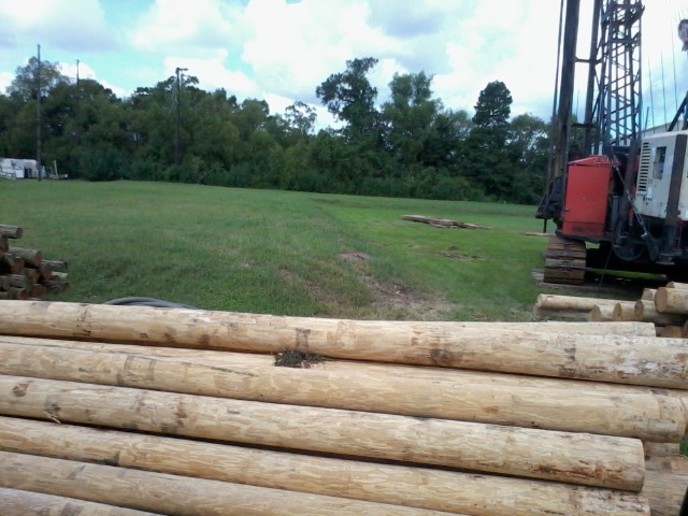
For big commercial sites they may even stack dirt on the site 10 to 15 feet high and use the weight of the dirt to compact the grade that will be used. They will also bring in a pile driver and put in 3 or 4 test piles to see how long the piles need to be. They count the blows needed to drive the pile 1 foot and once they reach the desired resistance they now know how long the piles need to be.
For a small commercial one story building like will go here or a house they just go on past experience for how long the piles need to be.
Once the dirt is compacted from it raining on it for several months they bring in a pile driver.
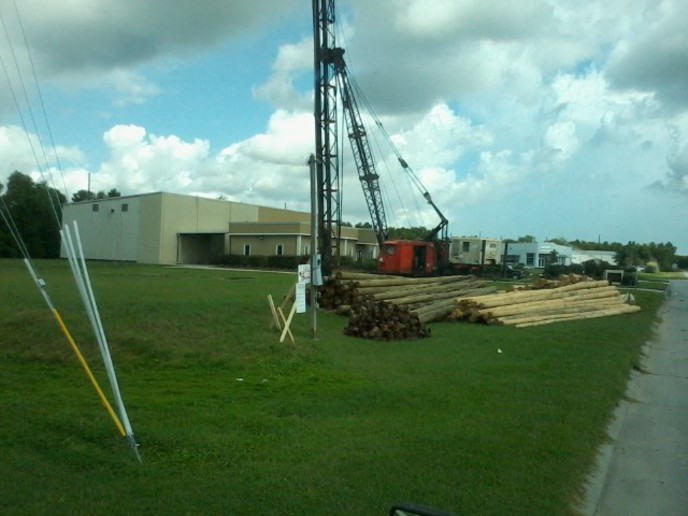
As you can see they have 2 different grades and lengths of piles for this job.
For a house they would just use the long piles in the foreground but they would be treated like the ones in the background.
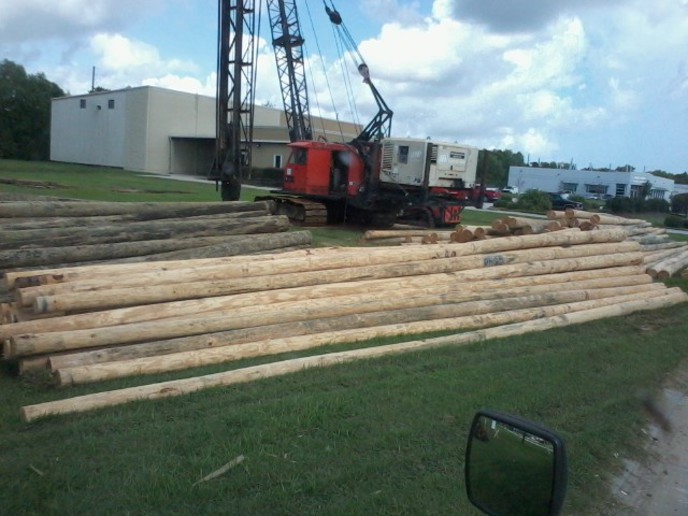
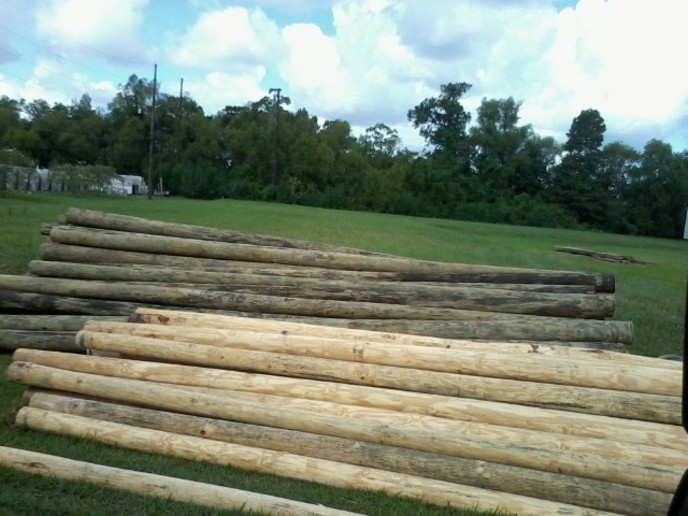
For this commercial building; since there looks to be about half as many short high treated piles as the long ones; we can assume the will cut the short ones in half and stack the half on top of the long one.
They will use these connectors to hold the two piles on top of one another.
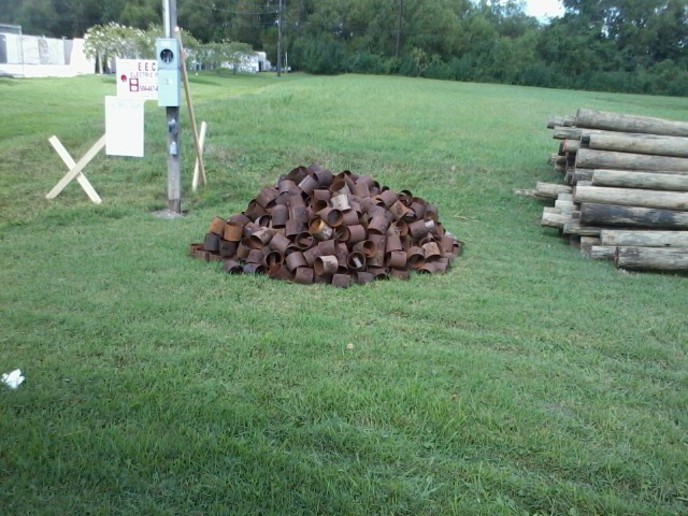
They can use to lesser treated piles for the bottom because there is no chance of them ever seeing oxygen again. While the upper piles will be under a slab there is still a chance of some oxygen getting to them due to ground settlement.
Without these piles the slab would settle and crack.
There are some neighborhoods where you can see under the edge of the slab because the whole yard has sunk and no fill has been added as upkeep.
All of this area use to be water and over thousands of years it was filled in by Mississippi river silt.
So it is not the best building site. In fact if you dig just a few feet and leave the hole overnight it will be full of water when you return in the morning.
They start by hauling in river sand we pump out of the Mississippi to build the land up to the desired elevation. So yes that is Iowa or some other states dirt.

For big commercial sites they may even stack dirt on the site 10 to 15 feet high and use the weight of the dirt to compact the grade that will be used. They will also bring in a pile driver and put in 3 or 4 test piles to see how long the piles need to be. They count the blows needed to drive the pile 1 foot and once they reach the desired resistance they now know how long the piles need to be.
For a small commercial one story building like will go here or a house they just go on past experience for how long the piles need to be.
Once the dirt is compacted from it raining on it for several months they bring in a pile driver.

As you can see they have 2 different grades and lengths of piles for this job.
For a house they would just use the long piles in the foreground but they would be treated like the ones in the background.


For this commercial building; since there looks to be about half as many short high treated piles as the long ones; we can assume the will cut the short ones in half and stack the half on top of the long one.
They will use these connectors to hold the two piles on top of one another.

They can use to lesser treated piles for the bottom because there is no chance of them ever seeing oxygen again. While the upper piles will be under a slab there is still a chance of some oxygen getting to them due to ground settlement.
Without these piles the slab would settle and crack.
There are some neighborhoods where you can see under the edge of the slab because the whole yard has sunk and no fill has been added as upkeep.

